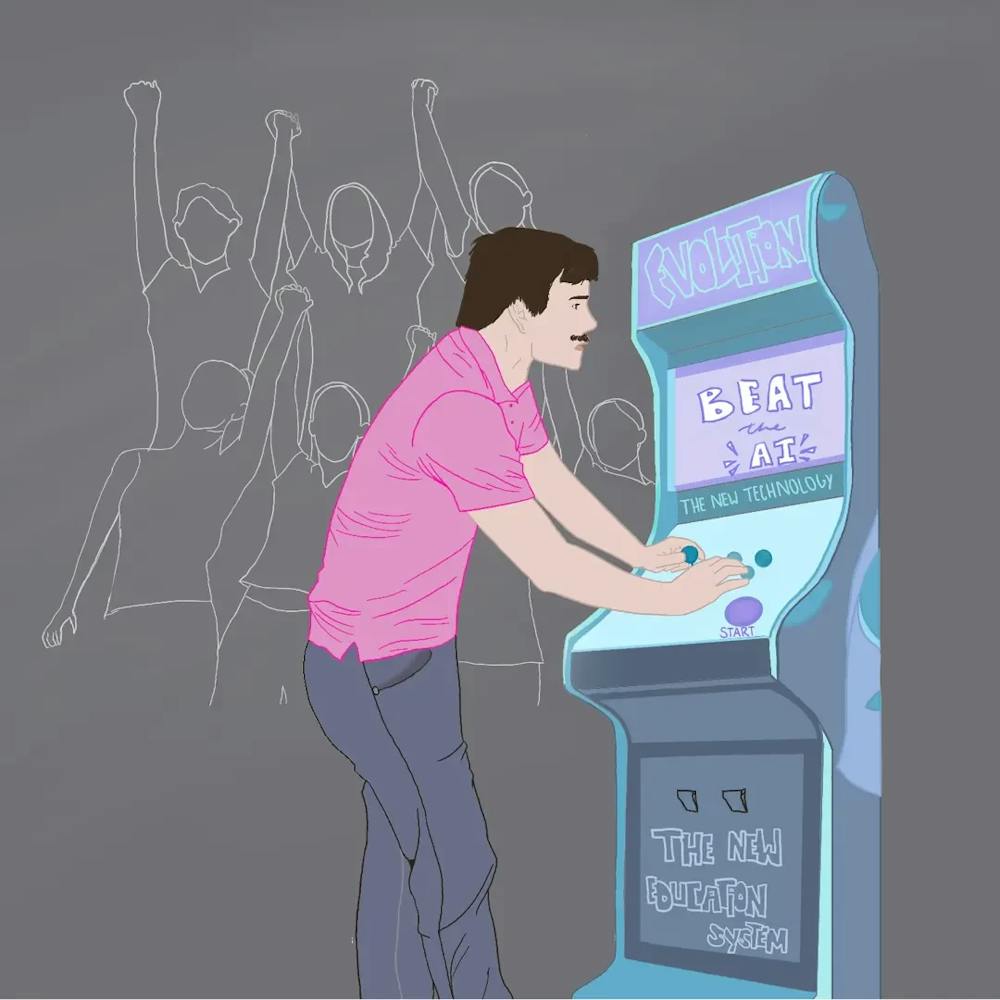By: Mack Reed
As time goes on, the next generation grows. With this new generation comes new students, new teachers, and a whole new set of challenges.
Teaching is known to be difficult, from dealing with rambunctious children on a daily basis to planning their curriculum. On top of that, each generation of students coming to middle school and high school have their own challenges that educators must overcome. For this generation, it is events and trends, like COVID-19 and the rise in children’s use of technology.
Dan Hawthorne, a history teacher at Rensselaer Central High School, says his experience with COVID-19 and teaching has not been entirely pleasant.
“No rational person would look at how school was taught during the lockdown and be like, ‘Yeah, that was fine,’” Dan says. “Teachers had no experience teaching in that sort of format … But some of the behavior – I have some students that still, as juniors, act like middle schoolers. I think there was a significant social setback.”
The COVID-19 pandemic impacted everyone in 2019, but it had an especially troubling effect on students.
According to the National Assessment of Educational Progress at the Nation’s Report Card, analyses of student test scores have shown declines in academic achievement. The average score decline for 13-year-olds between the 2019-20 school year and the 2022-23 school year was four points in reading and nine points in math.
Jeff Spanke, associate professor of English and director of English education at Ball State, disagrees that COVID-19 has set students back. He believes the use of technology has delayed reading skills.
“I wouldn’t say that COVID-19 morphed things,” Spanke says. “I think it just accelerated and exposed very different strands of trends that have been happening for the 20 years prior, and it took us about three years to kind of catch up to it.”
Teachers like Dan have also seen a rise in technology being used in the classroom setting.
“The daily struggle is ‘Alright, take your earbuds out’ because they firmly believe that my class isn’t important,” Spanke says.
He says they can’t listen to both him and the music at the same time.
Spanke also has some disagreement with the use of technology in the classroom and its perceived benefits. He says he hasn’t seen any evidence that technology has enhanced learning, but he does believe it’s affected engagement and made the classroom more fun. He says technology has made accountability more difficult for him.
However, Nell Miske, a freshman studying secondary education at Ball State, says she thinks technology can be a good thing if used correctly.
“Too much technology is definitely a detriment to development and creativity and attention spans,” Nell says. “[The next generation is] gonna know how to use technology even better than our generation because they’ve grown up with it.”
She says being dependent on this technology can be worse for teachers, making it more difficult to learn if, for instance, the SMART Board goes out and lessons cannot be continued.
Dan thinks the new generation of teachers has an advantage because they’ve grown up with more technology than a lot of older teachers.
“I think older teachers pretty stereotypically struggle to keep up, or they want to still keep teaching the way they did 20 years ago,” he says.
In recent years, studies have shown that student literacy rates decreased. In addition to the growing difficulties, AI contributes to the fears a lot of teachers have toward modern technology use.
According to Education Next, students may use AI to solve homework problems or take quizzes. AI-generated essays can undermine learning and the college entrance process. Aside from ethical issues from cheating, students who use AI to do work may not learn the content and skills they need.
A problem for teachers is to figure out how to make sure their students do not cheat or plagiarize using AI technology and other technological sources.
Dan says challenges are constant for teenagers. Along with being chronically online having an impact on their mental health, Dan doesn’t think they get enough sleep.
According to the Centers for Disease Control and Prevention, 42% of high school students in 2021 reported feeling sad or hopeless for two consecutive weeks, which is 26% up from what it was in 2009. Nell is worried about challenges for students with mental health, including depression and anxiety, once she starts teaching.
From the rise in technology to COVID-19, teaching continues to evolve. It’s not the same as it was 20 years ago, and it is continuing to go in a new direction.





The Daily News welcomes thoughtful discussion on all of our stories, but please keep comments civil and on-topic. Read our full guidelines here.